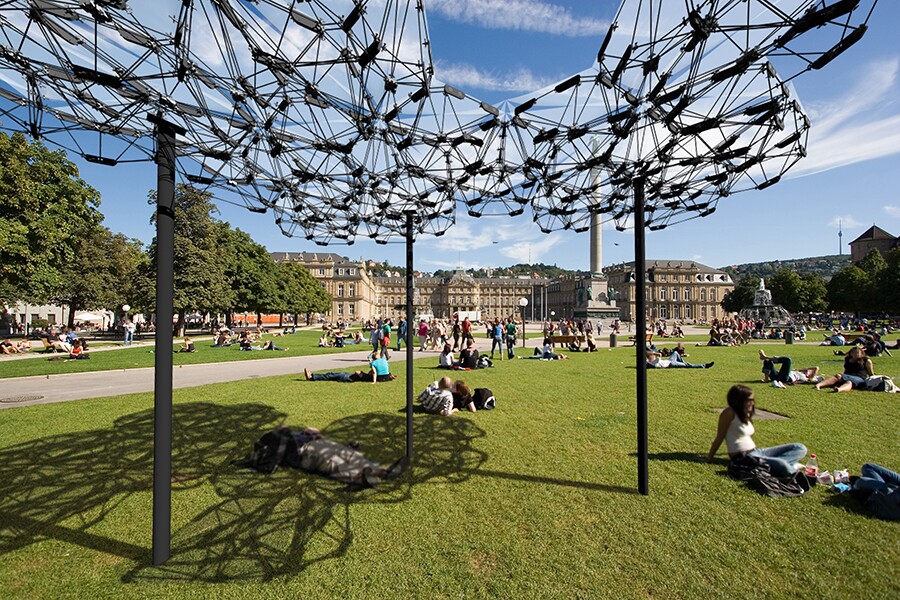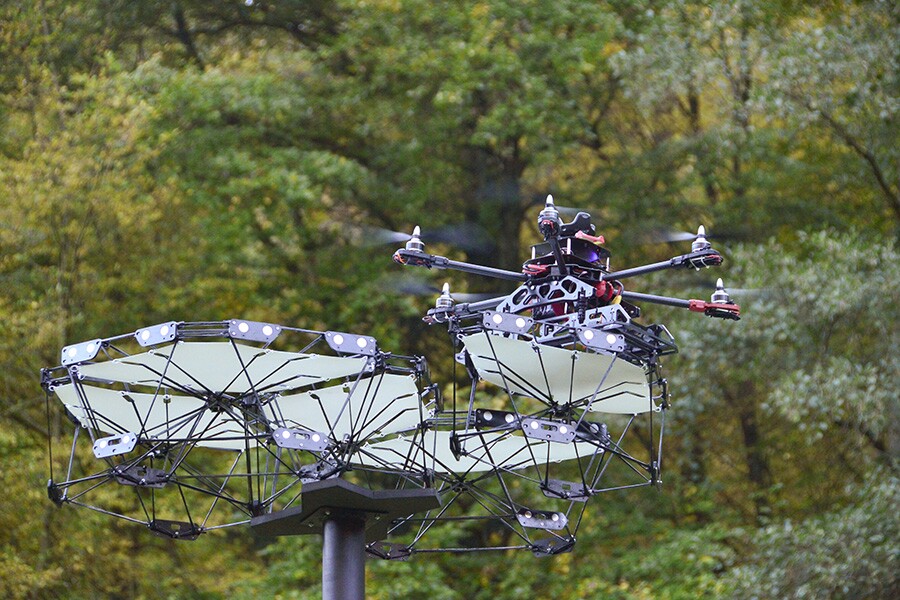A string of interesting research projects have shown us how drones might one day be used to not just construct elements of our environment, but keep things just the way we like them. A new system from the University of Stuttgart explores how these flying robots can give rise to a novel form of intelligent architecture, demonstrated through an adaptive canopy that changes its configuration as the sun moves through the sky.
The unique capabilities of drones could have a lot to offer the world of construction, starting with the job of maintenance. They are already putting their airborne cameras and sensors to work inspecting bridges and pipelines, while scientists at the University of Leeds are investigating how they can monitor urban centers for potholes and degrading power lines, with the ultimate objective of ushering in "self-repairing cities."
Over at Switzerland's ETH Zürich Institute for Dynamic Systems and Control, meanwhile, researchers are making great headway in using drones to construct things from the ground up. Way back in 2011 they showed off a six-meter (20 ft) tall tower made from 1,500 polystyrene bricks, every one of which had been plonked into place by an autonomous drone.
The advantages of the aircraft in the world of construction stem from the fact that they can reach any point in space, unlike a crane. This has enabled them to weave unique tensile structures, such as walkable rope bridges, guided only by flight algorithms. And while their small frames restrict the types of materials they can work with, scientists look to overcome this with synchronized fleets that fly in tight formation to lighten the load.
The idea is that rather than replacing current construction techniques, drones could give rise to entirely new forms of architecture that reshape our urban landscapes in ways we can't yet imagine. Which brings us to this new project from the University of Stuttgart.

Dubbed the Cyber Physical Macro Materials project, the prototype system was cooked up by a team of masters students as a thesis project, and serves as an intriguing proof-of-concept for a novel kind of reconfigurable architecture that responds to the world around it. The architectural system consists of a self-supporting roof structure with a canopy made up of tech-packed panels. Onboard the lightweight carbon fiber frame is a shading element, sensors, communications modules and sets of magnets around the edges to latch onto adjoining panels.
These smart panels connect with autonomous drones equipped with grippers over a communications network, enabling the aircraft to assemble them in ways that respond to the environment. So an algorithm can enable the drones to respond to the changing orientation of the Sun and rearrange the panels to maintain a shaded area of the same size and shape throughout the day. Another algorithm can enable it to detect occupants beneath it, adding, removing and shifting panels to keep growing crowds cool.

In its current state, the system is pretty limited in terms of practical use. Generally speaking, autonomous drones can't legally be left to buzz around public spaces packed with humans, and there are plenty of ways to stay out of the Sun that don't involve small aircraft constructing makeshift shelters overhead.
But with drones all the time able to fly more quietly, for longer times with greater recharging options and with less risk of crashing into stuff, there may come a time where they do zip about discreetly optimizing our surroundings, as imagined by the University of Leeds researchers and their self-repairing cities. As the Suttgart students say, the project is about reimagining established approaches to the built environment in light of flying robots that can give us a helping hand.
"With its ability to continuously reconstruct during use, the system challenges pre-conceived ideas of robotic digital fabrication and sophisticated pre-fabrication for architecture," the team writes on the project website. "One can imagine an agile versatile canopy autonomously moving through a large public space according to the position of the sun, providing the occupants with shade or actively rebuilding itself to influence the occupants while at times retreating entirely to nearby rooftops."
A new research paper describing the work was published in the Robotic Fabrication in Architecture, Art and Design 2018. You can also see the system in action in the video below.
Source: University of Stuttgart


















